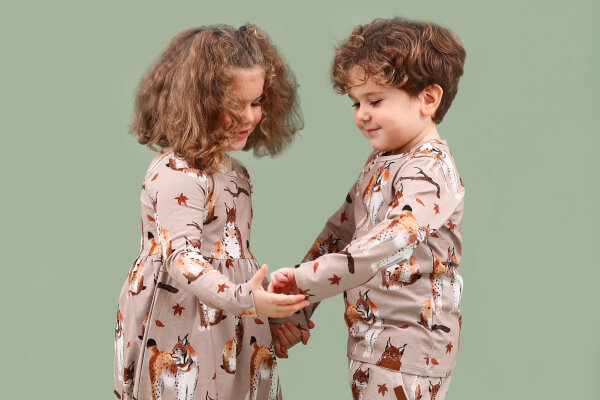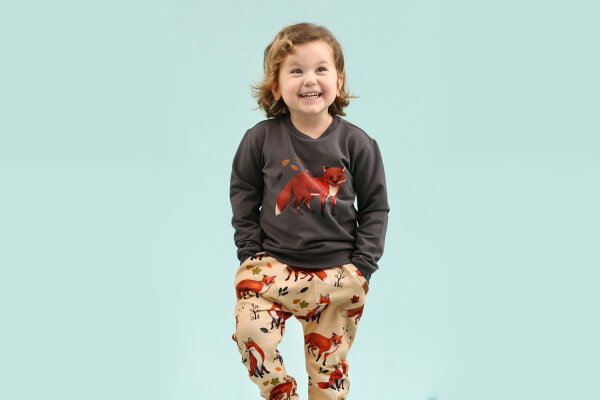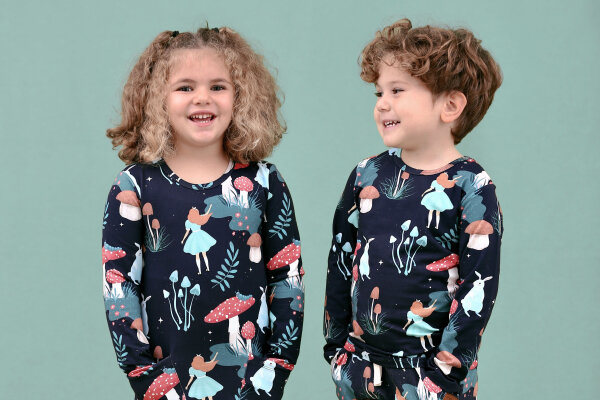Usually, from the moment you enter a children's clothing store, two different types of design greet you. Pink, bright, unicorn-patterned clothes are designed for girls, and blue, dark, car-patterned clothes are designed for boys. Of course, you may not encounter the image we have fully described, but what you see probably won't be much different. This is not the case only in clothing stores. You can clearly notice this gender difference in the toy shops and children's books aisles. Gender stereotypes are roles attributed to men and women from a very young age. These stereotypes limit the true personality of kids by placing them in patterns of taste and behavior by their gender. We guess it would be something we would never want to limit the personality of our children, right? It is very natural for some girls to like the color blue and cars, or for some boys to love the color pink and unicorns… When we try to limit children to such stereotypes, we take away their freedom of self-expression. So when did these stereotypes appear or did they always exist?
History of gendered children's clothing
The interesting thing is that until the 1800s, there were no such stereotypes in kids’ clothes. Until these years, babies, regardless of gender, usually wore white cotton clothes. These clothes both wore out late and it was easier to change the diapers thanks to their dress cut. In the 1850s, children's wardrobes began to be colored with slightly more pastel colors. At the beginning of the 20th century, colors were now separated by gender in stores. However, on the contrary of today, until the 1940s, pink was perceived as a stronger color for men, and blue was considered more elegant for women.
After the Second World War, this perspective was reversed and today's perception of feminine pink and masculine blue was created. With the rise of feminism in the 1960s, strict gender divisions in fashion eased somewhat. But in the 1980s, knowing the baby's gender before birth led to the re-popularization of the masculine and feminine color phenomenon. It seems quite possible that the gender-specific color-coded clothing was the result of a marketing strategy. For example, due to the gender-specific colors, families with a boy and a girl, started to buy clothes for both of their children separately, thus increasing the sales rates of the stores.
What does gender-neutral children's clothing mean?
Gender-neutral children's clothing is clothing created for all children, regardless of gender stereotypes. The fact that children's clothing is gender-neutral means that it rejects stereotypes such as blue for boys and pink for girls. Thus, kids move away from gender-based social expectations and cultural norms, so they can express themselves authentically.
We, as Walkiddy, support the creativity and dreams of all kids equally with our gender-neutral clothing and encourage them to be themselves. We want our clothes to liberate and empower them, not limit them. Therefore, when you check our collections, you will see fun, colorful, nature-inspired clothes designed for everyone. In addition, our cuts are designed so that all kids can move freely and play comfortably. We don't have a boy or girl category because all patterns and colors are for all kids. Our priority is always to create designs in which all kids feel comfortable, happy, and free. We believe that gender-neutral clothing will be the fashion of the future, and we are trying to do our best to support it.
Why gender-neutral clothing for kids?
1.It supports children's development
Babies have unlimited potential, they are like a clean white slate. However, when we assign gender colors and roles to our kids from the moment they are born, we begin to limit their potential. By opting for gender-neutral clothing, we can let kids decide who they are and want to be, rather than making them think that their gender has limits. Rejecting the norms that say girls should be delicate and boys should be tough, and the fashion trend that adopts these norms is a very important step for us to support our kids’ personal development. So children can focus on exploring the world around them, expressing themselves without rules or boundaries.
2.It's better for the planet
Gender-neutral clothing means that these garments can be easily shared with anyone, regardless of whether they are boys or girls. Clothes without color, style, and pattern restrictions can be worn by children of different genders in the family until they are worn out. This means less consumption, less production, less discarded clothing, and less carbon footprint.
3.It’s budget-friendly
The fact that gender-neutral clothing is suitable for both boys and girls also protects your family's economy. In this way, if you have two kids, a girl, and a boy, you do not have to buy separate clothes for them. Your children can exchange their clothes, or one can wear a garment that is too small for another. This way, clothes are transferred between siblings, and your budget for kids’ clothing is reduced.
4.It increases children's freedom of movement
Gendered clothing not only restricts children's choice of colors and patterns but can also restrict their freedom of movement with uncomfortable cuts. Gender-neutral clothing is designed so that all kids can play vigorously and athletically. These clothes allow children to play and move in the most comfortable way.
5.It encourages creativity in the industry
Gender-neutral clothing has the potential to positively affect the future of many industries. The increasing demand for these garments encourages brands to create more creative designs free of gender stereotypes. Marketers have to make ads that are more creative, original, and that support children's personal development. In addition, children who are raised independently of stereotypes will make career choices more freely in the future. For example, this may pave the way for more women to turn to engineer, the emergence of different perspectives in this sector, and new inventions.



